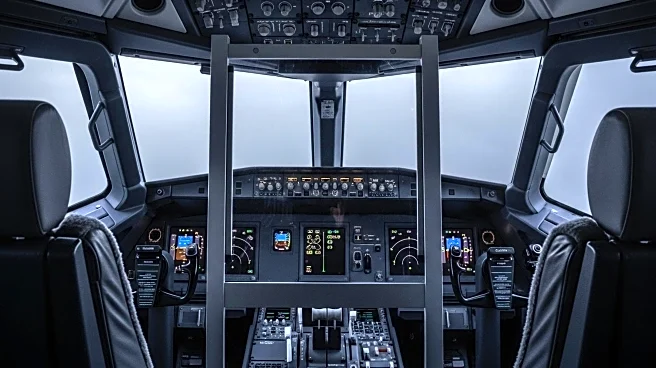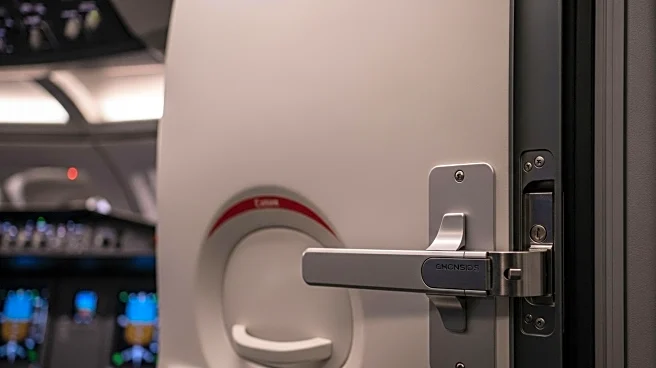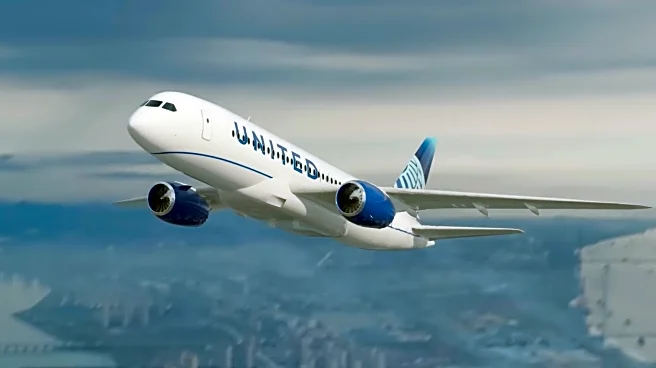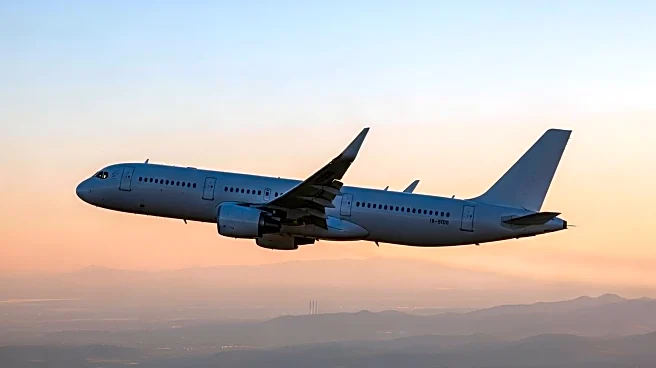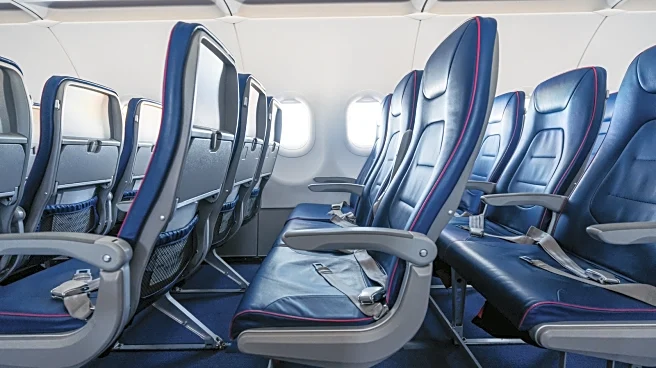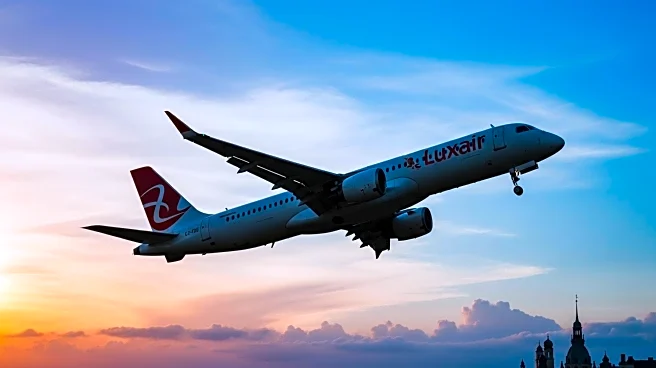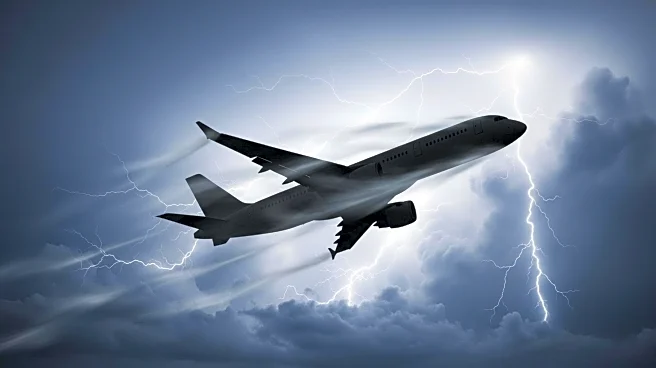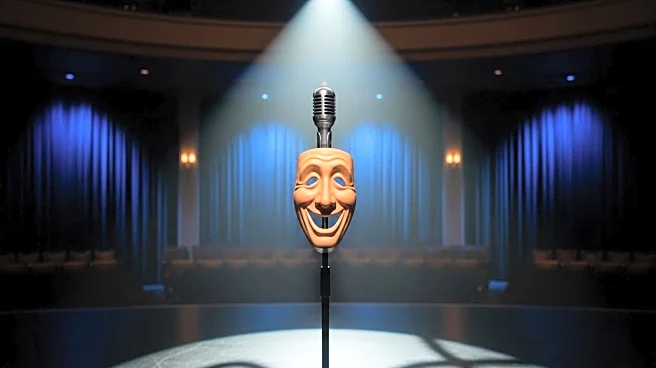What's Happening?
Southwest Airlines has begun installing secondary cockpit barriers on its new Boeing 737 aircraft, enhancing security measures when the cockpit door is open. This initiative follows a Federal Aviation Administration requirement passed in 2023, aimed at preventing unauthorized access to the flight deck. The barriers are fold-away doors deployed by flight attendants when pilots exit the cockpit, providing an additional layer of protection. Southwest plans to have 26 aircraft equipped with these barriers by the end of the year. Other major airlines have not yet announced similar plans.
Why It's Important?
The installation of secondary cockpit barriers is a significant step in aviation security, addressing concerns that have persisted since the September 11 attacks. By enhancing cockpit security, Southwest Airlines is prioritizing passenger safety and potentially setting a precedent for other airlines. The Air Line Pilots Association supports this measure, emphasizing its importance in safeguarding the flight deck. This development could influence industry standards and prompt other airlines to adopt similar security enhancements, impacting operational procedures and passenger experience.
What's Next?
Southwest Airlines will continue to roll out the secondary cockpit barriers across its fleet, with 26 aircraft expected to be equipped by year-end. The aviation industry may see increased pressure from pilot unions and regulatory bodies for broader implementation of such security measures. Airlines like American, Delta, and United may soon announce their plans regarding cockpit barriers, potentially leading to industry-wide adoption. Stakeholders will be watching closely to see how these changes affect security protocols and passenger interactions.
